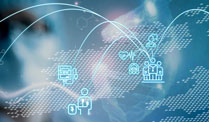Hammertoe Surgery
Contact Us
Request an AppointmentPlease note that a referral letter is required before an appointment can be confirmed.
Please note that a referral letter is required before an appointment can be confirmed.
Useful Information
About this service
Hammertoe is a deformity of the toe where the toe becomes bent upward in the middle.
There are two types of hammertoe, flexible or fixed hammertoe. Flexible hammertoe is when the joint can still be moved. Fixed is when the joint has become rigid and immobile. Non-surgical treatments like padding of the toe and a change of footwear will be recommended by a surgeon. Surgery is only recommended by a surgeon if non-surgical treatments are unsuccessful.
Before your surgery, you may need imaging tests. These may include X-rays, or magnetic resonance imaging (MRI).
It is important for patients to be in the best possible overall health prior to surgery.
Patients and their healthcare team can take several actions before and after surgery to reduce the risks of complications:
- Medication: patients should inform their surgeon of what medication they are on. The surgeon will review and decide if any of these need to be stopped before the procedure.
- Diet: in the weeks before surgery eat a balanced diet as this can help the healing process.
- Smoking: to reduce the risk of infection patients who smoke will be asked to stop smoking for one month before and after the operation.
- Blood clots: to reduce the risk of developing a blood clot in the legs or lungs, a number of recommendations will be given to in advance of surgery.
- Infection: for patients who have signs or symptoms of an infection, such as a chest or urinary infection in the days prior to surgery, the surgeon should be informed. The surgeon will also need to be advised of a rash or flare up of psoriasis or eczema around the hip area or a leg ulcer. For patients who have a history of MRSA/VRE or have been in contact with someone with MRSA/VRE, the Healthcare team should be informed.
- Exercise: it is important to be as fit as possible before the procedure, as it will make recovery much faster.
The surgeon and anaesthetist will discuss the options for anaesthesia with the patient, as well as the risks and benefits associated with each.
If a patient has a flexible hammertoe the surgeon may reroute the tendon in the toe. This will assist pulling the toe into a straight position.
If a patient has a rigid hammertoe there are two options:
- A joint resection is the first option. With this procedure an incision is made over the top of the toe. To assist in straightening the toe the ligaments and tendons may be cut. The surgeon will remove the end of the bone and pins are temporarily used to hold the toe straight. The pins are usually removed six weeks after the surgery.
- Fusion surgery is the second option. During this procedure, the surgeon will cut the ligaments and tendons to straighten the toe. The ends of the bone are cut and the toe is straightened. The surgeon will insert pins, screws or other implants to keep the toe straight while the bone ends heal together.
The majority of patients have this procedure as a day case and will return home the same day.
- After surgery, patients will stay in the recovery room for one to two hours before being discharged home.
- After the procedure the patient’s leg will likely be elevated.
- It is to be expected that there will be some pain and discomfort after surgery. Patients will be given pain medication in hospital and will be sent home with a prescription for pain medication.
- Patients should organise for someone to drive them home from the hospital and stay with them for at least the first night.
- After their surgery, patients will likely need to wear a special shoe for a few weeks. They may also need to use crutches for several weeks. The surgeon will provide instructions about your recovery and rehabilitation.
- Patients will be given an appointment to attend the dressing clinic two weeks after surgery.
- Patients will be given an appointment to attend their surgeon four to six weeks post-op.
- Patients may require a follow-up x-ray.










